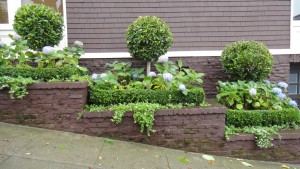Today’s guest article has been written by B. Murphy
At their most basic level, model railroad layouts are simple circles and ovals that
would fit onto a 4×6 sheet of plywood.
These simple track layouts are easy to set up and relatively inexpensive, but they
aren’t really very realistic. After all, with the exception of kids’ rides at the
amusement park, how many trains have you ever seen that just go around in circles?
The Point-to-Point Layout
Real railroads go from one place to another place. They may have sidings, branch
lines, and other subsidiary systems, but the main line starts at one point, travels to
another point, and stops.
Trains are turned around at terminals by means of extensive yards, wyes, loops, and
turntables, but the main line, whether double-track or single-track, goes from point
to point. There are switches and yards at one end, and a turnaround of some sort at
the other.
Despite the point-to-point model railroad’s resemblance to real railroad lines, it
is’nt very successful on a model railroad.
True, in some very large model systems the point-to-point plan has been used, but
in most cases the model railroad cannot possibly approximate the distance traveled
by a real railroad.
If you had the entire Madison Square Garden for your layout, you still wouldn’t be
able to duplicate, in scale mileage, a reasonable point-to-point railroad. In normal
model railroads, the train hardly leaves one terminal before it has arrived at the end
of the line.
No time is allowed for switching operations at the terminals for freight trains to
perform their normal functions, while the express is speeding from terminal to
terminal.
In a good-sized layout, scenery can handle part of this problem. The express can
rush into a tunnel, where the operator stops it. He then carries on other railroad
business to his heart’s content and, when it is completed, makes his express rush
out of the other end of the tunnel as if it had been traveling hundreds of miles all
the time.
A small layout, however, cannot adopt even this illusion because a small railway has
no room for two genuine terminals.
The Out-and-Home Layout
The out-and-home layout solves part of this problem – it has only one terminal.
This is really a point-to-point system doubled back on itself.
You have a terminal. You send the train out and it travels through farmland and
forest, through villages and mountains, and finally arrives at a terminal. It just
happens to be the same terminal it started from, but you can easily pretend that it
isn’t.
This system gives you a little more mileage between terminals than the point-to-
point system, but in most model railroads the train arrives back home before you
have been able to do much, unless you use the tunnel or other method of hiding the
train that is supposed to be traveling.
While more adaptable to model railroads than point-to-point, it still presents many
problems except on very large layouts.
Both point-to-point and out-and-home layouts can be combined with continuous
pikes, in large layouts, to offer variety and realism—and this is precisely the
procedure used by experienced model railroaders with plenty of space.
For the vast majority, however, the continuous layout is not only best but also
essential for interesting and varied train movements. With a clever use of buildings
and scenery it can also create the many little deceptions that bring a realistic flavor
to the operation of your railroad.
About the Author:
Bill Murphy offers advice about designing, building, maintaining and repairing model
railroads at the Model Train Report website. Find out more about building your own
model railway – sign up for my free “Model Railroad Design Secrets” e-course at http://www.modeltrainreport.com/course/
 If you have a steep garden, terracing is a great way to make your garden more attractive and useful.
If you have a steep garden, terracing is a great way to make your garden more attractive and useful. Depending on your timescale and budget, there are a few different options for achieving this. The more long term – though unfortunately tending to be the most expensive – is to use stone walls. You could also use wood, but you’ll be doing more ongoing maintenance.
Depending on your timescale and budget, there are a few different options for achieving this. The more long term – though unfortunately tending to be the most expensive – is to use stone walls. You could also use wood, but you’ll be doing more ongoing maintenance. Once you’ve built your line, you’re going to want to show it off!
Once you’ve built your line, you’re going to want to show it off!
